#witches and Heathens
Text



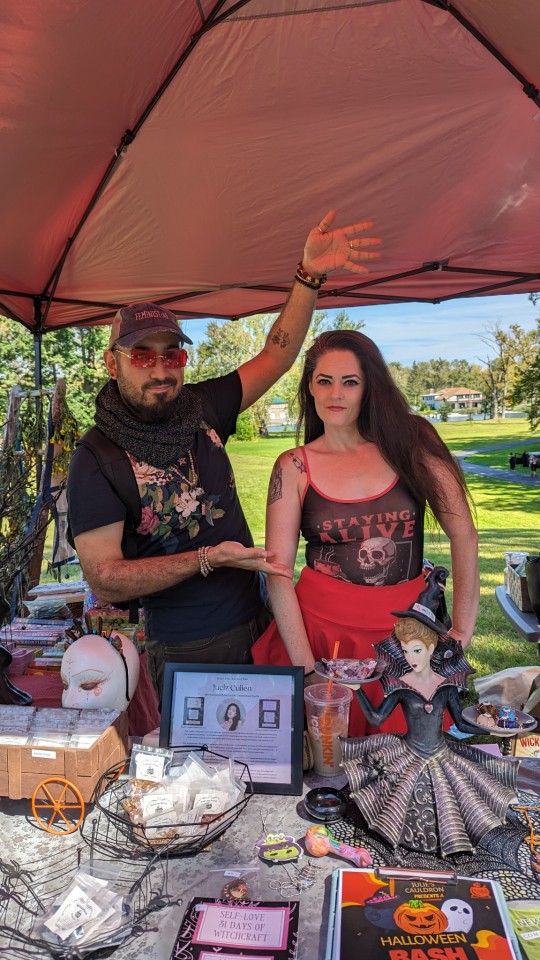



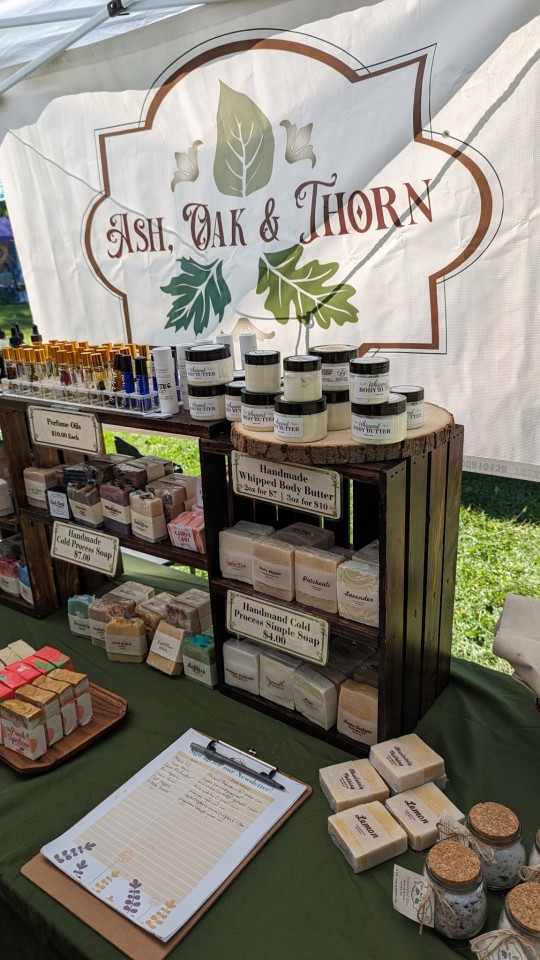


Central New York Pagan Pride DAY 🌙 hanging out with Witches and Heathens, and taking pictures everywhere ❤️ here with Jeff Cullen, Allan Piers, Juelz Cullen, and many friends 🌙🐈⬛🌺
#magick#witchcraft#wicca#witches#pagan#witches and Heathens#jeff cullen#hellfurian#hekate#brujobros#paganism#pagans#heathens#cny#Central New York#Pagan Pride#Pagan Pride DAY#CNYPPD#Witches
4 notes
·
View notes
Text
worship evolves with time. yes, the people who worshipped the gods back in the day had specific offerings to be given. but what is stopping you from giving modern offerings? things around your house? offerings shouldn't have to cost you a fortune. your deities aren't holding you at gunpoint to only receive what you can't easily get. they are a means of showing your love in your day-to-day.
so yes!! give your deities candy bars! show them a silly little doodle of them in the corner of your notebook!! make a spotify playlist and play it for them!! dedicate a journal to them!! make a pinterest board and fill it with pins that remind you of them!!
the important aspect of these offerings is that you are thinking about your deities. thinking about them and feeling love and devotion to them is a means of offering! you are devoting your energy in these acts!!
#we are humans who evolve!! absolutely pay respects to the old ways but don't limit yourself!#deities are not trying to gobble ur wallet. do what u can <3#deity work#deity worship#paganism#heathenry#norse heathen#norse paganism#hellenic pagan#pagan witch#pagan#hellenic polytheism#norse polytheism
1K notes
·
View notes
Text
16 Ways to Connect with the Gods when you don't have an Altar
So I'm currently away from home for 10 days (pet/house sitting) and I don't have an altar space with me. I have my tarot deck and that's it. I decided to write this list incase it might help someone else who is away from home or is just in the pagan closet. Enjoy!
Read your Deity's myths or listen to people read myths on youtube
Sit outside and just think about them
Set your phone background to something that reminds you of them
Wear their colours or symbols
Make or listen to a playlist dedicated to your Deity/Deities
Do a digital offering on tumblr or another site
Just talk to them about your day
Write some poetry for them. Anything can be poetry, it doesn't have to be good
Scroll through their tags on social media
If you have coloured shoelaces wear their corresponding colours on your shoes!! (I can't believe i didn't think about this earlier)
Do your make up to honour them
Talk about them in a (dedicated witchy/pagan) discord server
Do something nice for someone. I know it's cheesy but it's cliche for a reason. For me it definitely makes me feel closer to my Gods
Draw/make art of them or one of their symbols
Youtube ambiance videos are great! If your Deity has an association with fire, water, birds, communal spaces or music there are heaps of videos on Youtube that you can play. Think coffee shop ambiance (communal space), waterfall/rain/water ambiance, nature/bird chirping ambiance, fire place ambiance, studying at the library ambiance, etc. endless possibilities
Draw their sigils/symbols on your face with skin care
I hope this helps!! Feel free to add any other tips. I tried to keep these relatively accessible for everyone.
#witchblr#paganism#witchcraft#hellenic polytheism#pagan witch#witch#witches#hellenic pagan#baby witch#beginner witch#T's original witchy posts#pagan#paganblr#hellenic paganism#budget witchcraft#norse paganism#norse mythology#norse gods#norse heathen#norse pagan#helpol#hellenism#kemetic#kemeticism#celtic#celtic paganism
2K notes
·
View notes
Text
Listen. Abandoning the idea of what a proper pagan is was the most rewarding experience. Your intuition is stronger than you think.
This isn't a science. You don't have to treat it like one. Go with your heart, go with your intuition. It will help you grow more than you've ever dreamed of.
#Letters to my younger self#Patron Speaks#pagan#paganism#pagan witch#witchblr#hellenic polytheism#helpol#norse heathen#polytheist#baby witch
856 notes
·
View notes
Text
This is not great.
(Also, for context, here is the full video I reference in this. )
6K notes
·
View notes
Text
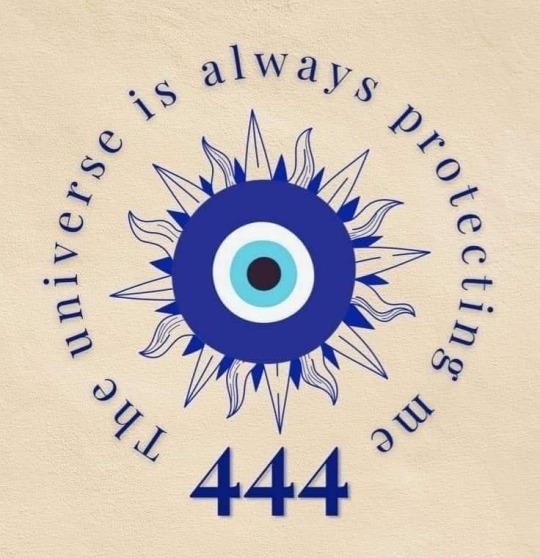
#witch#green witch#naturecore#freyja#heathen#heathenry#norse gods#goddess freya#pagan#chaos witch#witchcore#witchblr#witch community#ocean witch#baby witch#witchy#witchcraft#witches#witch aesthetic#water witch#spiritual#444#evil eye#the universe
2K notes
·
View notes
Text
Witchcraft and poetry are inseparable for me. What is a poem but a spell, every word woven with care and intention? A poem has the potential to craft new worlds, to open a portal into unseen realities, to rewild our hearts and souls. Poetry is spellcraft.
#poem#mine#my 2 cents#thoughts#Personal#Witch diary#paganism#pagan#witchcraft#witchblr#witch blog#Paganism#Heathen#magic#Ritual#Green witch#diary#my writing#spell#spellwork
590 notes
·
View notes
Text

Color Associations In Magick
Red - love, seduction, passion, strength, courage, charisma, assertiveness, survival, change, power
Blue - peace, communication, expression, forgiveness, traveling, protection, truth, sleep, patience, trust, pregnancy
Yellow - joy, abundance, intelligence, reason, learning, memory, inspiration, imagination, friendships
Green - growth, wealth, fertility, business, healing, nature, balance, luck, longevity
Orange - creativity, justice, ambition, opportunity, attraction, abundance, confidence, energy, celebration, goals, success
Purple - intuition, decadence, authority, wisdom, knowledge, influence, psychic abilities, devotion, enlightenment, overcoming fears, addiction, independence, spirituality
Pink - self-love, companionship, affection, spiritual healing, kindness, beauty, femininity, marriage, sensuality, children, healing abuse
Brown - home, animals, family, stability, endurance, grounding, solidarity, strength, hard work, earth
White - cleansing, purification, spirituality, higher-self, innocence, illumination, balancing, hope
Black - protection, binding, transmutation, banishing negativity, dignity, force, grief, secrets, endings, loss, security
Gray - stability, concentration, neutrality, reserve, balance, adaptability, flexibility
Gold - wealth, inner-strength, understanding, self-realization, sun, masculinity, abundance, happiness, overcoming addiction, luxury
Silver - wisdom, psychic powers, intelligence, memory, moon, healing, divination, money, femininity, fertility, hidden potential, success, awareness
#magic#magick#magical#magickal#witch#witchy#spells#spellwork#manifesting#manifestation#pagan#paganism#heathen#Heathenry#spell#baby witch#witchcore#witchcraft#witches#witchblr#witch community#cottage witch#green witch#hedge witch#eclectic witch#wicca#color magic#grimoire#book of shadows#wiccan
895 notes
·
View notes
Text
Remember,
You are a practicing pagan. You don't have to do spell work everyday. You don't have to talk to your deities everyday. You don't have to spend every waking second focusing on your practice to be a valid pagan.
Your valid. No matter how often you're able to work with your deities. No matter how often you do spell work. No matter if you dedicate little or big things to your practice.
You make an effort once in awhile and thats more than enough. Save your spoons, it's ok.
#deity worship#norse paganism#hellenic polytheism#witchcraft#paganism#spoons#pagan witch#paganblr#hellenic pagan#pagan#norse gods#norse heathen
747 notes
·
View notes
Text
The Structure of a Pagan Prayer
When appealing to a deity or making an offering, it’s wise to know how this was traditionally done in the past so you can be as respectful as possible and build a true reciprocity with the gods. This type of prayer structure is found in all manner of pagan religions from Norse paganism, Hellenic (Greek) polytheism, Kemetic (Egyptian) prayer and so on. I got the inspiration and much of the information here from @Ocean Keltoi on Youtube who is a fantastic scholar and Norse heathen who actively stands against prejudice and is all around a wonderful resource.

Now, there are three main elements of a pagan prayer, which should be done in this order:
1. The Invocation. This is where you call upon the specific god you’re hoping to connect with. Think of it as writing the name and address on your letter to the Gods - it lets the deity know that this prayer is directed at them, which is important in a polytheistic religion with many gods. To start your invocation, address the deity directly by name, or use an epithet or kenning that they're known by. It's especially wise to choose an epithet that relates to what you're praying for, like using one of Apollo's healer epithets while addressing him in a prayer about a loved one's sickness, for instance. It’s also a good idea to praise them highly and with a certain air of reverence. These are ancient deities after all.
2. The Argument. Here you give your reasons for why a deity should fulfill your request and favor you. If you’ve brought offerings, cite them here. You can also include reasons for why you’re reaching out, such as love in a prayer for Aphrodite or matters of justice with the god Tyr. This is where you make your case to them. And if you’re reaching out to a deity you don’t have a working relationship with, which let’s be honest will be the case many more times than we’d like, then you can tell them this here also. A good example might be “Oh Tyr, one-handed war god and son of Odin, though we have not met before I have heard your name and been called to it…”
3. The Request. Finally you ask the gods to look kindly on your request and to grant you their blessing. Again, be as respectful and reverent as possible towards them.
Prayer Example: “Grey-eyed Athena, daughter of thundering Zeus, if ever I have poured out sweet wine for you, look kindly on me and grant me your wisdom.”

How to stand when making the prayer
This depends on which God you’re reaching out to and, of course, your own personal comfort. The most common ways of praying are to stand and perform some gesture of reverence, kneel while praying and even prostrate, kneeling fully on the ground with your head down as you appeal to the gods. Some might also choose to wear veils when performing prayers or rituals for deities, though this is naturally up to the individual.
In Hellenic tradition, if you’re praying to an Ouranic god (deities of the heavens) you would traditionally wear your hair up and stand with your arms raised to the heavens while reciting your prayer. Meanwhile, if you are praying to a Chthonic god (deities of the underworld), you would kneel and face downwards towards the Earth with your hair flowing freely.
Some Norse sources tell of ancient pagans prostrating before the gods, and yet this is still not entirely necessary. Pray however you see fit and what is most comfortable for you at the moment.

^ This is what prostrating looks like
Sources:
Ocean Keltoi's video on pagan prayers
Hearth and Fire Work's blog post on Hellenic prayer structure
#witchblr#witchcraft#witch tips#deity work#paganism#pagan#polytheism#hellenic pagan#hellenic paganism#hellenic polytheism#norse pagan#norse heathen#norse paganism#heathenry#kemetic paganism#kemetic pagan#celtic pagan#celtic paganism#spirit work
936 notes
·
View notes
Text
Queer Heathenry Masterpost
(updated google doc here)

General awareness:
Neo-Nazi Prevention & Dog Whistles
White supremacists are misappropriating Norse mythology
Dog Whistles in the Gender Critical Movement
Guide to Anti-LGBTQ Online Hate and Disinformation
What To Do When Racists Try To Hijack Your Religion
Inside Asatruism's Fight Against the Co-Opting of Their Religion by White Supremacists
Sources and Sites:
GLBT in the Northern Tradition (site)
Vikings are Gay! Podcast (podcast)
Academic Research
Excerpts and Essays:
Sex, Status, and Seiðr: Homosexuality and Germanic Religion
Sons of Frey
Ergi: The Way of the Third
Being Ergi
The Tale of a Transsexual Norse Pagan Spirit-Worker
Scholarly Articles:
Queer Themes In Old Norse Myth
Feminism in Medieval Scandinavia: How Paganism Forged Gender Equality
Magic, Genderfluidity, and queer Vikings, ca. 750-1050
Mythical beasts: How queer bodies expand the religious imaginary
Practices:
Rite of Passage for an Ergi Child
Honoring Ancestors: Queer Rite of Elevation
Queer-friendly Creators:
Ocean Keltoi (YouTube)
Nordic Mythology Podcast (Spotify)
The Norse Gods: Loki: An Evil Queer Icon? (YouTube)
Storied (YouTube)
The Welsh Viking (YouTube)
Hearthkvlt (online shop; artist)
Lockwood Metaphysical (online shop; artist)
Ludvig Levin (online shop; artist)
Queer/queer interpreted passages:
Grettisfærsla
The Birth of Sleipnir
Þrymskviða
Lokasenna
#heathenry#pagan#queer#queer paganism#paganblr#norse paganism#norse pagans#norse pagan#heathen pagan#heathenblr#heathen witch#queer witch#queer pagan#lgbt witch#lgbt pagan#loki worship
307 notes
·
View notes
Text
Every Pagan Holiday
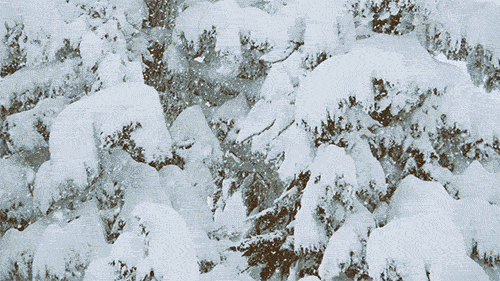
JANUARY
KALENDS
1st January
Origins: Ancient Greece/Rome
Observed by: Hellenic/Roman polytheists
Honouring Janus/Juno, first day of the Year. Kalends brought us the word 'calendar'.
ÞORRABLÓT (THORRABLÓT)
End of January/beginning of February
Origins: Iceland
Observed by: Heathens, Asatru
Midwinter Festival honouring Thor, usually by feasting and poetry.

FEBRUARY
IMBOLC
2nd February
Origins: Celtic polytheism /Ireland, as St. Brigid's Day
Observed by: Most neopagans, Wiccans, Druids, Asatru (as Charming of the Plow)
Imbolc is the most widely known and observed pagan holiday in the months of January and February. It falls at the beginning of spring/end of the winter for the Celtic peoples; marking the changing of the seasons, as most holidays do. St. Brigid is a Christianised form of or inspired by the Celtic fertility goddess Brigid who is celebrated on this day.
PARENTALIA
13th-21st February
Origins: Ancient Rome
Observed by: Greco-Roman polytheists
Translating to 'Ancestors Day', Parentalia is a nine-day celebration of deceased ancestors. Historically it was observed by feasting and making offerings and sacrifices to the dead and spirits of the underworld.
VÁLI'S BLOT
14th February
Origins: Old Norse
Observed by: Heathens, Asatru, Norse polytheists
Váli's Blot is considered by some Asatru to be the Norse equivalent of Valentine's Day but is widely acknowledged as a season changing festival. A day for marriage and celebrating with family and friends, and for remembrance of Váli, the son of Odin who defeated Höðr on this day.
LUPERCALIA
15th February
Origins: Ancient Rome
Observed by: Greco-Roman polytheists
Festival thought to honour a wolf who raised abandoned princes, celebrated originally by sacrificing goats to the gods, feasting, and, for fertility, nudity and fornication.
LESSER ELEUSINIAN MYSTERIES
17th-23rd February
Origins: Ancient Greece
Observed by: Hellenic polytheists
Initiation to the cult of Persephone and Demeter by sacrificing a pig. Prelude to Greater Mysteries, initiations held on these dates. Once completed, initiates could then move onto Greater Mysteries in the autumn.
ANTHESTERIA
27th February - 1st March 2021
Origins: Ancient Greece
Observed by: Hellenic polytheists
Athenian festivals dedicated to Dionysus and the dead. Held around the full moon in the month of Anthesterion, which in the Gregorian calendar this year roughly translates to 27th February.
THE DISTING/DÍSABLÓT
End of February/beginning of March
Origins: Uppsala, Sweden
Observed by: Heathens, Asatru, Norse polytheists
Celebration of Valkyries and other female spirits, called dísir. Sacrifices were made for a good harvest. Celebrated still by an annual market in Sweden.

MARCH
KALENDS
1st March
Origins: Ancient Greece/Rome
Observed by: Hellenic/Roman polytheists
Honouring the god Mars/Ares. Kalends brought us the word 'calendar'.
OSTARA/EARRACH
20th March
Origins: Anglo Saxon paganism, popularised as Ostara by Wicca
Observed by: Anglo Saxon Pagans, Wiccans, Neopagans, Druids (as Alba Eilir), Heathens (as Summer Finding), Ásatrú (as Sigrblót)
The northern hemisphere's vernal equinox, the word Ostara was introduced though Wicca and named for the goddess Eostre. Surprisingly unrelated to Easter in all but name, Ostara symbolises the beginning of spring. As a seasonal holiday it is widely celebrated by many different groups of pagans.
RAGNAR LODBROK'S DAY
28th March
Origins: Icelandic Sagas
Observed by: Ásatrú
Day of remembrance for Ragnar Lodbrok, Viking King of legend

APRIL
KALENDS/VENERALIA
1st April
Origins: Ancient Greece/Rome
Observed by: Hellenic/Roman polytheists
Celebration of the first of the month, this one honouring the goddess, Venus.
REMEMBRANCE FOR HAAKON SIGURDSSON
9th April
Origins: Norway, C9th
Observed by: Ásatrú
Day of remembrance for ruler of Norway who claimed lineage to Odin in the Icelandic Sagas.
WALPURGISNACHT
30th April
Origins: German Christianity, originally Saint Walpurga was known for banishing witches and other pests
Observed by: LaVeyan Satanists
Anton LaVey chose to celebrate this holiday as a follow up to the spring equinox and due to its past association with witchcraft.
HEXENNACHT (WITCHES' NIGHT)
30th April
Origins: German folklore, as Walpurgisnacht but witches were alleged to convene with the devil in this night
Observed by: Temple of Satan as 'a solemn holiday to honour those who were victimized by superstition'.

MAY
BEALTAINE/BELTANE
1st May
Origins: Celtic (Ireland/Scotland/Isle of Man)
Observed by: Wiccans, Neopagans, Celtic reconstructionist, Ásatrú/Heathens (as May Day)
One of the more well-known pagan festivals, Beltane is a festival of fire and the beginning of the summer. Also widely referred to as May Day, it is celebrated by lighting fires.
KALENDS
1st May
Origins: Ancient Greece/Rome
Observed by: Hellenic/Roman polytheists
Honouring the goddess Maia, for whom the month may have been named.
REMEMBRANCE FOR Guðröðr of Guðbrandsdál
9th May
Origins: C11 Norway, Icelandic Sagas
Observed by: Ásatrú, Norse, heathens
Guðröðr had his tongue removed by Óláfr for rebelling against violent conversion from Norse paganism to Christianity.

JUNE
KALENDS
1st June
Origins: Ancient Greece/Rome
Observed by: Hellenic/Roman polytheists
Anniversary of temples to Juno Moneta (protectress of money, her temple was where coins were made), Mars/Ares (God of war), and the Tempestates (goddesses of storms).
ARRHEPHORIA
3rd Skirophorion (translates to mid-June)
Origins: Ancient Greece
Observed by: Hellenic reconstructionist
Feast in celebration of Athena and fertility.
MIDSUMMER/SUMMER SOLSTICE
21st June
Origins: Agricultural holiday/longest day observed for centuries by many civilisations. Christianity can date to as early as C4th
Observed by: Wiccans/Germanic neopagans (as Litha), Asatru/Heathens, Druids (as Alban Hefin)
One of the main four holidays in the Wheel of the Year and popularised by Wiccans and neopagans as Litha which is taken from the Anglo-Saxon words for June/July, this is the longest day of the year and the middle point and sometimes considered the beginning of summer.

JULY
REMEMBRANCE FOR UNNR/AUD THE DEEP MINDED
9th July
Origins: C9th Iceland
Observed by: Ásatrú, Heathens, Norse reconstructionist
Aud was a traveller in the 9th century moving between Dublin, the Hebrides, Orkney, and finally Iceland following the deaths of her husband and son. This day is to honour her memory.
HERACLEIA
July/August
Origins: Ancient Greece
Observed by: Hellenic polytheists
Festival dedicated to Heracles the demigod and his death, involving feasting and celebration.

AUGUST
LUGHNASADH/LAMMAS
1st August
Origins: Celtic Britain (Ireland, Scotland, Isle of Man)
Observed by: Wiccans, Neopagans, Christians (as Lammas), Ásatrú (as Freyfaxi)
Named for the god Lugh, this festival is one of the Celtic harvest festivals and marks the beginning of the harvesting months. It was celebrated by climbing mountains, bull sacrifice, offerings, and feasting. Handfasting is commonplace with Wiccans in modern times.
REMEMBRANCE FOR REDBAD, KING OF THE FRISIANS
9th August
Origins: C7th Frisia (area of Germany/Netherlands)

SEPTEMBER
NOUMENIA
8th September
Origins: Ancient Greece
Observed by: Hellenic polytheists
Celebration of new Hellenic lunar month. Offerings of honey and incense made to household deities.
REMEMBRANCE FOR HERMANN THE CHERUSCAN
9th September
Origins: C9th CE
Observed by: Heathens, Ásatrú
Hermann the Cheruscan, also known as Arminius of the Cherusci tribe, led the defeat against the Romans at the Battle of Teutoburg Forest and is lauded for saving Eastern Germanic peoples from being conquered by the Roman Empire.
AUTUMN EQUINOX (NORTHERN HEMISPHERE)
22nd September
Origins: 1970s neopaganism
Observed by: Wiccans and Neopagans (as Mabon), Ásatrú (as Winter Finding)
Named Mabon by prominent Wicca and Neopagan Aidan Kelly, after the Welsh mythological figure Mabon ap Moldron, the autumn equinox is one of the harvest festivals and marks the beginning of autumn in the northern hemisphere. Mabon is a relatively new pagan holiday not based on any specific historical festival, but traditionally people around the world would celebrate some kind of harvest festival around the end of September/beginning of October.
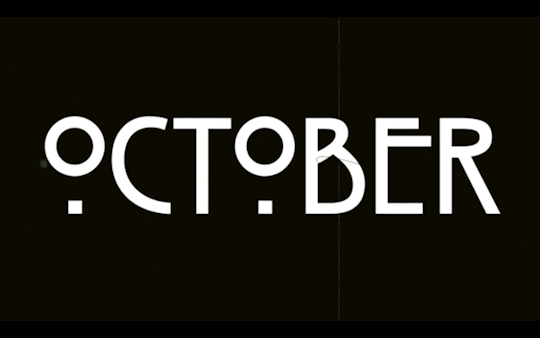
OCTOBER
PYANOPSIA
7th October
Origins: Ancient Greece
Observed by: Hellenic polytheists
Pyanopsia, or Pyanepsia, is a festival to honour Apollo, one of the most important deities, God of music, the sun, knowledge, healing, and archery - amongst other things. During the festival, two special offerings would be placed on doorways and carried to the temple. These offerings were a bean stew, and an olive branch wrapped in wool with honeys, pastries and seasonal fruits hanging from it.
REMEMBRANCE FOR LEIF EIRIKSSON
9th October
Origins: C10th CE
Observed by: Heathens, Ásatrú, Norse pagans
Remembrance for Leif and his sister Freydís Eiríksdóttir, children of Erik the Red, who are cited with being the first Norse explorers in North America.
THESMOPHORIA
12th-14th October
Origins: Ancient Greece
Observed by: Hellenic polytheists
Festival held in honour of Demeter Thesmophoros, goddess of agriculture, and her daughter Persephone, goddess of death and life, Queen of the Underworld. Celebrated primarily by women, this festival is linked with fertility, and we know very little about it due to its secretive rites. It is thought that it involved the sacrifice of pigs (although some sources say women), and abstinence.
REMEMBRANCE FOR ERIK THE RED
28th October
Origins: C9th CE
Observed by: Heathens, Ásatrú, Norse pagans
Erik the Red, probably named for the colour of his hair and beard, was the first permanent European settler in Greenland. His children were explorers too, who went to America, and although his wife converted to Christianity, Erik remained faithful to his Norse pagan gods.
SAMHAIN (HALLOWE'EN)
31st October-1st November
Origins: Gaelic - Scotland, Ireland, Isle of Man
Observed by: Celtic pagans, Neopagans, Wiccans
Pronounced SOW-in (sow rhyming with cow), Samhain was originally a harvest festival marking the beginning of winter. The day itself is the 1st November, but celebrations begin on October 31st, and this has become the accepted associated day. It's a festival of the dead, where the síthe, fae and spirits, can enter this realm from their own. Wiccans talk of a 'veil' thinning, meaning the boundary between worlds. Similar death related festivals around this time can be noted in other faiths from across the globe, and of course in the modern Hallowe'en.
WINTER NIGHTS (VETRNAETR), ÁLFABLÓT/DÍSABLÓT
31st October
Origins:
Celebrated by: Heathens, Ásatrú, Norse pagans
Winter Nights is mentioned in the Ynglinga Saga as one of the three greatest blessings of the year, the other two being Sigrblót in April, and þorrablót in late Jan/early Feb. Winter Nights is the celebration of the beginning of the winter season; Álfablót is a sacrifice to the elves, and Dísablót a sacrifice to the female spirits (dísir) and Valkyries.

NOVEMBER
REMEMBRANCE FOR SIGRID THE HAUGHTY
9th November
Origins: C9th CE
Observed by: Heathens, Ásatrú, Norse pagans
It is not actually known whether Sigrid Storråda, or Sigrid the Haughty, was an actual historical figure, an amalgamation of a few, or simply a myth. The lore goes that she was proposed to multiple times and turned down many but went on to orchestrate conflict when a potential suitor - Olaf Tryggvason, King of Norway - attempted to convert her to Christianity.

DECEMBER
REMEMBRANCE FOR EGILL SKALLAGRÍMSSON
9th December
Origins: C10th CE
Observed by: Heathens, Ásatrú, Norse pagans
Day celebrating the poet, farmer, and berserker Egill Skallagrímsson, who is recalled in The Icelandic Sagas by Snorri Sturluson. Egill is known for his many killings and escaping death by writing an epic poem after being captured when washing up on our Northumberland coastline.
SATURNALIA
17th - 23rd December
Origins: Ancient Rome
Observed by: Roman polytheists, some Hellenic
Like Yule and Lesser Dionysia, Saturnalia was the Roman winter festival celebrating the coming return of the sun and honouring the god Saturn. The standard feasting and drinking feature, and slaves would be treated as equals like Dionysia. Saturnalia is another festival cited as being picked up by Christians and used as inspiration for Christmas.
WINTER SOLSTICE (YULE/MIDWINTER)
21st December
Origins: Germanic nations, as early as C4th CE
Observed by: Norse pagans, Wiccans, Neopagans, LaVeyan Satanists, Ásatrú, Heathens, many Germanic nonpagan peoples
Yule is the midwinter festival known commonly among pagans as a time for feasting, being with loved ones, remembering ancestors, and looking forward to the return of the light and warmer days. Many pagans will celebrate Yule for more than one day, some celebrating a week either side, some for longer, up to two months, and some for twelve days afterwards. True Yule would have originally been in January for midwinter, but King Haakon the Good
moved it to coincide with the Christian celebrations in the 10th century, as told in the Ynglinga Saga.
On the 24th of December, Anglo Saxons are said to have celebrated 'Mothers Night' honouring female ancestors.
RURAL/LESSER DIONYSIA
End of December/beginning of January
Origins: Ancient Greece
Observed by: Hellenic polytheists
Smaller festival honouring the god Dionysus (Greater Dionysia took place in cities at the end of winter). Feasting, mask wearing to stop distinction between classes so that everyone could feel equal, sacrifices, parades, and phallic display were all used to celebrate.
#wheel of the year#wiccan#pagan#heathen#greek#mythology#holidays#religious holidays#pagan holidays#non-Abrahamic holidays#witch#witchcraft#witchblr#pagan wicca#polytheism#paganism#witches#witch holidays#witches holidays#pagan witch
172 notes
·
View notes
Text
i find it fascinating how my perception of the gods have changed once i met them. both in looks and personality.
Freyja, related to beauty, love and lust, i believed would look young and very feminine. Yet, when presented with her, she was a gorgeous, mature woman with lines at her eyes and a towering figure. The realization that a goddess I acknowledge as being so gorgeous had wrinkles and strong facial features made me reconsider my own perceived “flaws” and standards of beauty. She was beautiful in her strength and wisdom and yet also in her divinity and confidence. I had forgotten a woman of extreme beauty was also a goddess of war. And in both being true, I found her to be the most powerful woman I know.
Seeing Hades, I believed he would be fearsome and cold. Yet, when I looked into his eyes, there was warmth. He had an appearance of a man in his 40s with long hair, the color of the night, and he had no resentment or even disdain. Only softness. I didn’t fear him nor did he try to have me do so. He was safe as he led me through the courtyard where we met. Where I thought he would be an imposing and cold-hearted figure, I found someone with such patience like a father-figure would have.
Apollo, whom I thought would be bubbly and funny from how I’ve seen others described him was indescribably elegant. He carried himself well. He was kind and patient. Where I thought I would find youthful naivety, I found charm and elegance. And he only asked to help me in my healing. Even when I thought I did not need him, he waited patiently until I could hear him properly. And no matter how long it took, he was still welcoming with a smile.
I truly believe everyone should have the opportunity of meeting their deities and finding how they appear to them. What they show themselves as is what you may need. I find it fascinating to see how others see them :) They love us very much.
#deity work#deity worship#apollo deity#apollo worship#hades deity#hades worship#freya deity#freyja#freyja deity#freyja worship#hellenic polytheism#hellenic pagan#hellenism#hellenic deities#norse paganism#norse heathen#heathenry#heathenism#paganism#pagan witch
500 notes
·
View notes
Text
If, like me, you have always felt a strong connection to trees, I have a fun little activity for you to try! One of my newly acquired rituals when it comes to magical work is to collect fallen lichen when hiking in the woods, and use it in protection workings. For example, I love placing it near my bedpost and along windows! Lichen only grows in areas where the air is pure and clean, devoid of smog and protected from pollution. For this reason, and since I'm afflicted with a respiratory condition, I've always felt like lichen was a great symbol of healthy air and of a healthy environment in general. To me, it feels like it purifies whatever room in place it in, and many of the magical workings I use it for!
#witchcraft#personal#heathen health#heathenry#spirituality#trees#polytheism#norse paganism#pagan#magical herbs#herbalism#witchy tips#witch
289 notes
·
View notes
Text
Hey there. Normalize unconventional divination or worship. Just because it's not in a book or an article does not invalidate what helps you.
Is your relationship with your deity different from other practitioners? Who cares. It's your personal journey. This isn't an organized religion, you have the ability to pace yourself, think outside the box and learn what works for you as an individual.
#hellenic polytheism#loki deity#norse heathen#apollo deity#lord apollo#artemis deity#lady artemis#baby witch#pagan witch#witchblr#letters to my youngrr self
764 notes
·
View notes
Text
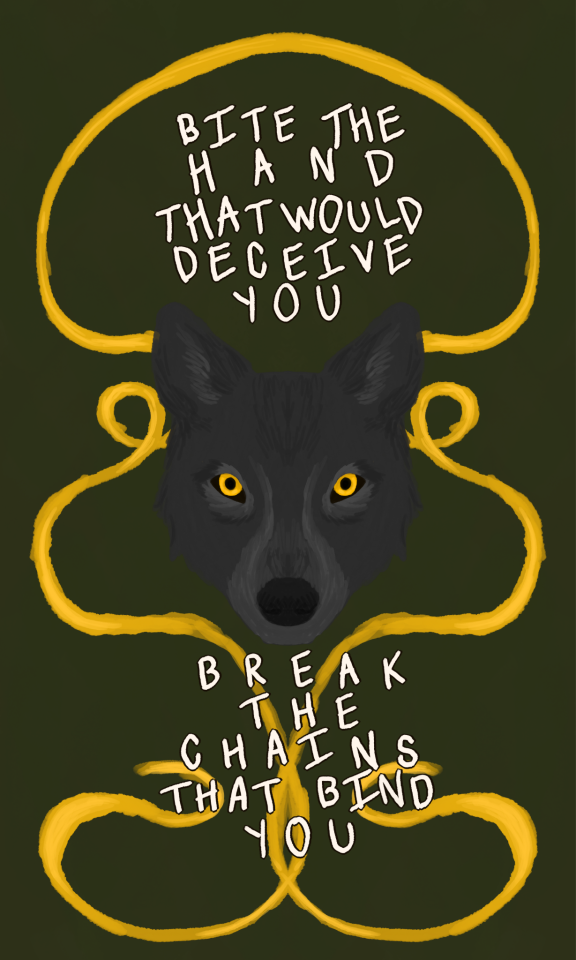
Fenrir
#norse witch#norse mythology#norse pagan#norse gods#norse heathen#norse pantheon#norse paganism#fenrir#norse fenrir#the great wolf#break the chains that bind you#bite the hand that deceives you#norse wolf#digital drawing#digital art#digital illustration#wolf art#punk#folkpunk#folkwitch#feralpunk#queer punk#void punk#rabiespunk
396 notes
·
View notes